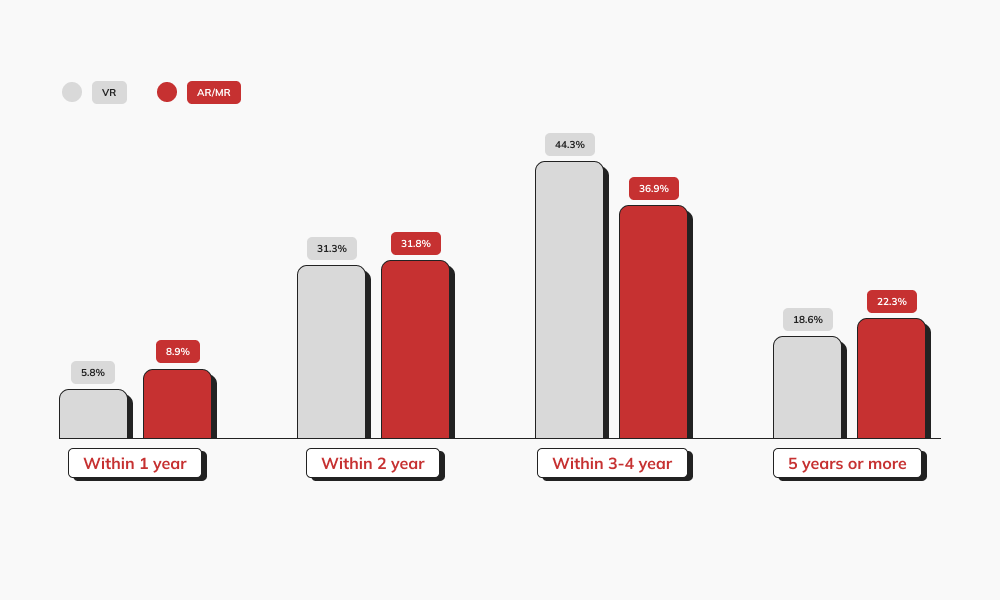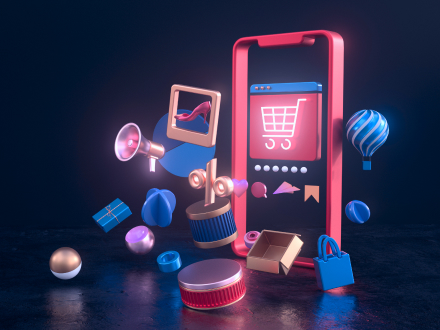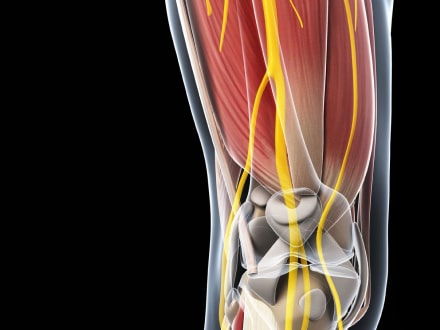Your message has been sent.
We’ll process your request and contact you back as soon as possible.
The form has been successfully submitted.
Please find further information in your mailbox.


Over the last decade, e-commerce has transformed how we shop. However, until recently, online shopping has lacked the sensory experience of traditional brick-and-mortar stores.
The advent of augmented reality (AR) has brought about this change. In fact, augmented reality has taken center stage in e-commerce, allowing customers to visualize and customize their purchases through 3D and AR models for e-commerce. The value of the AR market is predicted to reach $50 billion by 2024, with 71% of consumers reporting that they would be more likely to purchase if retailers used AR capabilities.
The purpose of AR is to give users a better perception of reality by superimposing a computer-generated image on their real-world view and integrating sounds, images, and text.
In e-commerce, virtual reality headsets allow customers to try on and test products before purchasing. AR allows marketers and retailers to captivate potential buyers with immersive pre-purchase activities, such as trying on clothing, experimenting with makeup, and visualizing furniture, resulting in greater customer engagement.

Despite some business leaders’ doubts, we are on the verge of experiencing the disruptive effects of augmented (AR), virtual (VR), and mixed reality (so-called metaverse). By 2023, there will be 1.4 billion active AR device users, and 70% of purchasers from 16 to 44 years old are already familiar with the technology.
The AR/VR market in the USA is projected to strike an astonishing $250 billion by 2028, The Insight Partners reports, giving decision-makers a good reason to invest in the high-tech field.
The advent of advanced smartphone cameras has expanded the capabilities of AR technology and made AR shopping more accessible through multiple apps. With consumer-friendly device options and improved technology distribution, AR has become an attractive tool for marketers and business owners across various e-commerce channels.

AR has revolutionized the e-commerce industry, enabling businesses to provide customers with virtual try-on experiences, visualize products in their homes, and explore items in greater detail. These benefits improve customer engagement and satisfaction, leading to increased sales and brand loyalty. In this context, it is crucial to understand the advantages of augmented reality in e-commerce for businesses to thrive in the digital age.
By leveraging AR technology, customers can visualize clothing items on themselves, determine optimal sizing, and even preview products in their homes. AR also eliminates the need for traditional mannequins, allowing customers to see themselves in various outfits and choose the perfect look. As a result, integrating AR into e-commerce can enhance customization and boost conversion rates, ultimately driving sales and increasing revenues.
Clarity about a product significantly increases the likelihood of customer purchases and repeat business. By providing immersive and engaging product experiences, AR technology in e-commerce can enhance conversion rates and ultimately drive customer loyalty.
Many customers return items because they receive faulty, damaged, or incorrectly described items. By enabling customers to make informed purchasing decisions, augmented reality in e-commerce can significantly reduce return rates.
E-commerce businesses adopting AR early on can gain a competitive advantage over their competitors, providing a more innovative and personalized shopping experience.
AR provides customers with a more engaging and interactive shopping experience, increasing their engagement with products and reducing the likelihood of cart abandonment.
AR allows customers to visualize products in their own environment, giving them a better understanding of the product’s size, color, and other features.
Augmented reality technology has transformed the e-commerce landscape, with businesses increasingly leveraging its capabilities to offer customers immersive and personalized experiences. As the popularity of AR continues to grow, staying up-to-date with the latest trends in augmented reality apps for e-commerce has become essential for businesses to gain a competitive edge. Here are the top augmented reality apps for e-commerce, showcasing valuable tips for optimizing AR strategies and enhancing customer engagement.
The COVID-19 pandemic has led to a surge in online activity, prompting brands to explore new ways of engaging with their customers. This trend is expected to continue, with Deloitte predicting that 75% of the global population will become regular users of augmented reality. Social media apps are crucial for introducing AR to a wider audience. Early adopters like Snapchat and Instagram offer the ability to develop AR filters for brands to promote their products. In 2021, Christian Dior used AR filters on these platforms to create “virtual word of mouth,” generating over 1.3 million impressions.

Mobile technology continues to advance rapidly with innovations like more sophisticated depth-sensing hardware (ToF and LiDAR) emerging. With each new smartphone generation, augmented reality features become more robust, and this trend doesn’t seem to be slowing down any time soon.
Famous brands like Google, Microsoft, Vuzix, and Lenovo are developing smart glasses, with some announcing their bold plans at this year’s Consumer Electronics Show.
Brand-owned apps enabling customers to view products through virtual reality is an important consideration for leveraging mobile AR’s enhanced capabilities, with the IKEA Place app as a notable example.
The integration of AR mirrors in physical stores is gaining significant attention in the retail industry. This is typically achieved through two techniques: the first involves a digital screen with a motion sensor placed behind a mirror, which superimposes images using AR in real time. The second technique involves a digital display with cameras, resembling an oversized smartphone instead of a conventional mirror. While smart mirrors are predominantly used in China, there is growing interest in this technology in the United States, with significant investments being made in research and development.
Essentially, an online “showroom” operates like a virtual try-on, enabling customers to place virtual products in their desired environment, such as a living room or bedroom. While virtual try-ons require customers to flip the camera around, the underlying technology is similar to showrooms, providing e-commerce businesses with versatile AR options across multiple verticals. This technology’s potent capabilities are exemplified by Amazon’s in-app furniture shopping feature, which serves as an example of an AR “showroom.”

In 2017, IKEA introduced the IKEA Place app, which allows purchasers to use metaverse tools for online retail, making the Swedish conglomerate one of the early AR pioneers in the industry. The app enables users to place thousands of IKEA catalog items with remarkable accuracy of 98% in their homes. Users can view and adjust any catalog item by pointing their cameras to the desired locations. They can rotate the item and move around to explore it from different angles to determine if it is the right fit for their space, adjusting the shape, appearance, and functionality of any potential purchase without ever having to leave their home.
Sephora Virtual Artist is a prime example of how AR capabilities can be leveraged for educational purposes. This innovative tool offers a wide range of features, including the ability to experiment with makeup looks, take photos of outfits to match shades, explore full-face looks, and access virtual tutorials on applying makeup.
Whether the user is a novice or a seasoned makeup artist, they can utilize the AR e-commerce features to test and purchase the products that suit them best. With this technology, women can experiment with different looks easily and enjoy an astounding shopping experience.
Nike introduced Nike Fit in 2019, an app that employs augmented reality technology to measure shoppers’ feet and recommend the perfect size for a range of Nike shoes. The application takes comprehensive measurements of the customer’s feet and provides customized footwear recommendations, making it a personalized and engaging experience for purchasers. Thanks to this innovative tool, Nike’s shoe returns have significantly decreased, resulting in improved shoe performance.
Augmented reality technology has moved beyond science fiction and is now being actively used by businesses to enhance the customer experience. With AR, customers can make online purchases more confidently and enjoy a more immersive shopping experience. If you’re looking to take advantage of these disruptive solutions for your business, consider the state-of-the-art AR solutions offered by Innowise. With our cutting-edge technology, you can attract new customers and drive revenue growth to stay ahead in the competitive market.
Rate this article:
4.8/5 (45 reviews)












Your message has been sent.
We’ll process your request and contact you back as soon as possible.

By signing up you agree to our Privacy Policy, including the use of cookies and transfer of your personal information.